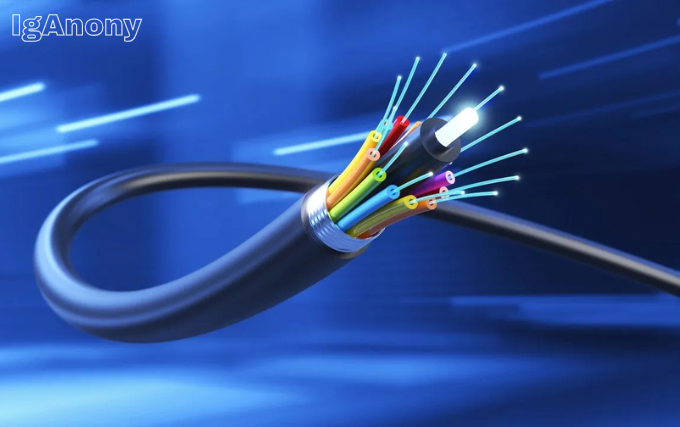In a world where the Internet has become as essential as electricity and water, the infrastructure that underpins our connectivity must be robust, reliable, and capable of handling vast quantities of data at lightning speeds. At the heart of this modern marvel is the fibre optic cable, the unsung hero of the digital age. Its importance cannot be overstated, as it forms the backbone of our connected world, encompassing everything from high-speed Internet to cloud computing and beyond.
Understanding Fibre Optic Cables
Fibre optic technology utilises light to transmit data through thin strands of glass or plastic known as fibres. This allows it to offer unparalleled bandwidth and speed compared to traditional metal wire cables. Fibre optics are not subject to electromagnetic interference, meaning they provide cleaner signals and significantly improved security against eavesdropping or hacking.
The Composition of Fibre Optic Cables
Each fibre optic strand, although thin, is incredibly powerful. Coated in a protective cladding, these fibres are often bundled together to form a cable that can span vast distances. Some cables are encased in a heavy-duty sheathing, making them ideal for long-haul telecommunications, undersea cabling, or high-risk environmental conditions.
The Role of Fibre Optic Cable in Modern Connectivity
Fibre optic cables play a pivotal role in ensuring that data is transferred rapidly and reliably across continents and oceans. Without this technology, the global exchange of data on the scale we see today would be virtually impossible.
Internet and Data Transfer
The lightning-fast Internet speeds enjoyed in the digital era are largely due to the deployment of fibre optics. With each passing year, fibre optic technology pushes the boundaries of data transfer rates, making high-definition video streaming, instantaneous file sharing, and seamless access to cloud-based services the norm.
Telecommunications
Telecommunications companies rely heavily on fibre optics to provide voice, video, and data services. Thanks to fibre optic cables, we have witnessed a revolution in telecommunications with the emergence of VoIP (Voice over Internet Protocol) and live video conferencing becoming everyday tools for personal and commercial communications.
Healthcare and Education
Sectors like healthcare and education have significantly benefited from the adoption of fibre optic cables. Medical facilities use them to transmit imagery and data between departments quickly and securely, while educational institutions rely on the technology to offer distance learning and real-time collaborative experiences.
The Advantages of Fibre Optic Cable Over Traditional Cables
Fibre optics come with several benefits that give them a considerable edge over copper or coaxial cables. Its advantages permeate across various aspects that include speed, bandwidth, distance, interference, security, and longevity.
Greater Speeds and Higher Bandwidth
The primary advantage of using fibre optics is the speed at which data can be transmitted. A single fibre strand can carry immense amounts of data, more than any copper cable of the same diameter. Additionally, it provides significant bandwidth potential, accommodating the ever-growing demand for high-speed Internet and multimedia services.
Extended Transmission Distances
Unlike copper cables, which require signal boosting at regular intervals, fibre optic cables can carry signals over much longer distances without significant loss. This makes them particularly suitable for rural broadband deployment and lengthy undersea cabling.
Reduced Electromagnetic Interference
As they are made from glass or plastic and transmit light, fibre optics are not prone to electromagnetic interference. This ensures a cleaner signal and reduces the risk of data corruption during transmission.
Enhanced Security
Security is a prime concern in the digital age, and fibre optics provide an additional layer of security. It is incredibly difficult to tap into a fibre cable to intercept the data, ensuring a higher level of data protection from intrusions and leaks.
Durability and Sustainability
Fibre optic cables are designed to withstand more than just the passage of time. They are less susceptible to weather conditions and environmental hazards, which bodes well for longevity and reduces the need for frequent replacements.
The Future of Fibre Optic Cable
As we look towards the future, the significance of fibre optic cables only grows. With the continuous evolution of technology and an ever-increasing reliance on cloud services, big data, and the Internet of Things (IoT), the demand for fibre optic cables can be expected to surge exponentially.
Innovation in Fibre Optics
Research and development in fibre optics are pushing the envelope, providing us with new types of cables that are thinner, more flexible, and even more capable of handling vast amounts of data. Innovations such as photonics and new glass compositions are paving the way for an even more connected future where the possibilities are boundless.
Conclusion
The power of fibre optic cable within our network infrastructure is indescribably critical. It is the foundation upon which our modern digital communication systems are built and will continue to be the enabler for new technologies and innovations. For businesses, governments, and individuals alike, the role that a robust fibre optic cable network plays in connectivity and progress cannot be underestimated. It truly is the backbone of modern connectivity—a silent powerhouse, orchestrating our virtual and often physical cords to the wider world.







